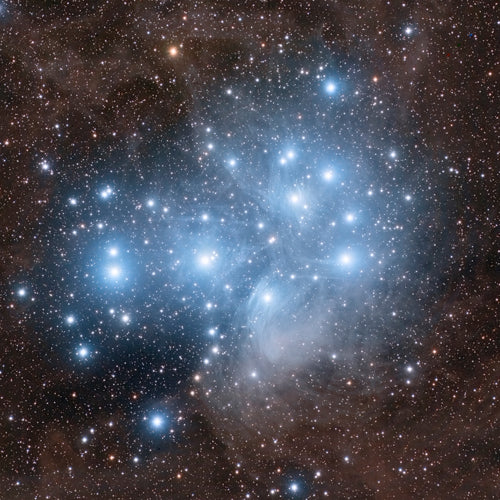Pleiades (M45)
The Pleiades, known as Messier 45, or the Seven Sisters, is a bright cluster consisting of mainly large hot blue stars. The cluster is the brightest Messier object, and the stars form a distinct shape, appearing almost as a mini plough. The blue nebulosity seen in the image is not visible to the naked eye, and while originally thought to be part of the cluster as left over gas from the star birth, it is in fact a dust cloud in front of the nebula, through which the star cluster is moving through. The brown dusty regions in the background of the image are actually part of the Taurus Giant Molecular Gas Cloud. This is a gas cloud containing molecules, most of which are H2, and that spans thousands of light years throughout the galaxy. This is a single frame photograph taken over 6 nights in September 2011.
28 hours of Luminance were combined with 3 hours of Red, Green, and Blue per panel. This gives a total exposure of 17 hours for the entire image. Although the star cluster is very bright, this is an extremely tricky object to photograph. The bright stars quickly saturate the chip and overwhelm the blue nebulosity regions. Balancing the exposures for the large Dynamic range in the image proved very difficult. To show the brown dusty molecular cloud, very long exposures are needed to go deep into the background signal.
This photograph was shortlisted for the Royal Observatory Greenwich "Astronomy Photographer of the Year" competition in 2012.
Note: All our prints are printed on Baryta 325g Paper, which is an excellent paper for framing. The paper is a gloss type, which gives very vivid colour views.





